Free Retirement Letter Template to Announce Your Retirement Professionally
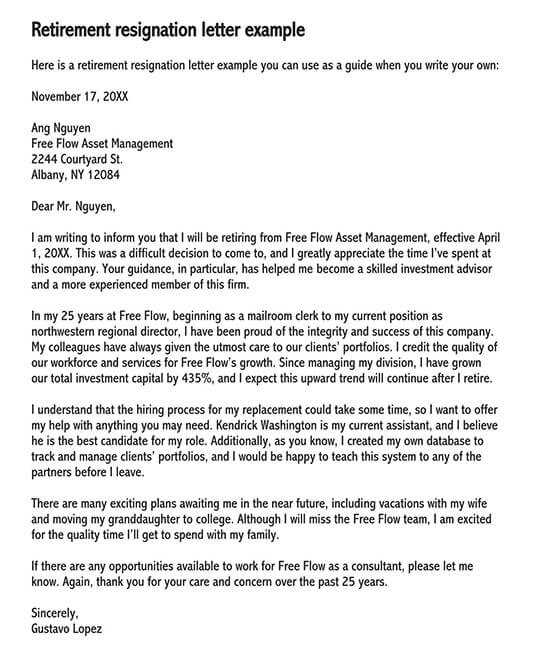
When it’s time to move on from a long-term position, expressing your gratitude and announcing your departure in a clear and respectful way is essential. A well-written note not only helps maintain positive relationships but also sets a professional tone for your exit. Whether you’re moving on to a new chapter or taking some time off, having a structured and heartfelt message can leave a lasting impression.
Composing a thoughtful farewell communication allows you to convey your appreciation for the opportunities provided and highlight your accomplishments. It also ensures that colleagues, managers, and other associates are informed in an appropriate and organized manner. With the right framework, expressing your appreciation and future plans becomes an easy task.
Creating a personalized document doesn’t have to be overwhelming. There are simple formats available that can be tailored to your needs, making the process smooth and efficient. This guide will walk you through everything you need to know to craft a message that suits your style and situation. From expressing gratitude to including key details, it’s all about finding the right words to match the moment.
Why Retirement Letters Matter
When transitioning from a long-held role, it’s important to leave behind a positive and professional impression. A carefully crafted farewell note serves as a formal way to communicate your departure while expressing appreciation for the time spent with the organization. This communication not only informs colleagues and managers but also helps maintain strong professional relationships for the future.
Such a message allows you to reflect on your experience, acknowledge the support you received, and share your future plans. It also demonstrates respect for the organization and the people you’ve worked with. A thoughtful farewell communication can smooth the transition and leave a lasting mark, ensuring you part ways on good terms.
Additionally, sending a well-structured note provides closure for both you and your team. It allows everyone to acknowledge the shift and adjust accordingly. Whether you’re moving on to a new adventure or retiring after many years, this gesture shows that you value the time spent together and are committed to leaving on a high note.
Key Points to Include in a Letter
When crafting your farewell message, there are several essential elements to ensure your communication is clear, respectful, and well-received. Including the right details will help convey your gratitude, provide closure, and leave a positive impression on your colleagues and employer.
- Express Gratitude: Thank your employer and colleagues for the opportunities and experiences you’ve had. Acknowledging the support you’ve received creates a tone of appreciation.
- State Your Departure: Clearly mention your final day or the date you’ll be leaving. This helps your team plan for the transition.
- Reflect on Accomplishments: Briefly mention the milestones or projects you are proud of. It’s a way to highlight your contributions and show that you value your time spent in the role.
- Offer Assistance: If applicable, offer to help during the transition period. Whether it’s training a successor or assisting with handover, this gesture shows your commitment to a smooth exit.
- Stay Positive: Maintain a positive and optimistic tone throughout the message. Keep the focus on the future and the good relationships you’ve built during your time with the company.
Including these key points ensures that your communication is complete and thoughtful, leaving a lasting, positive impact on those you’ve worked with.
How to Format Your Farewell Message
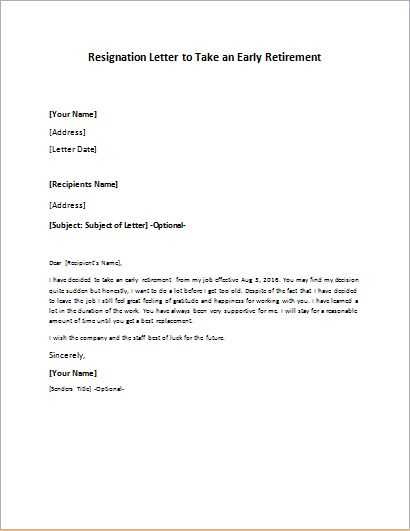
Formatting your message properly ensures that it’s easy to read and delivers the intended message clearly. The structure of your communication plays a crucial role in conveying professionalism and thoughtfulness. A well-organized message is more likely to be well-received and leave a positive impact on your colleagues and employer.
Start by addressing the appropriate person or group directly. Depending on the level of formality, you may choose to use “Dear [Name]” or a more general greeting like “Dear Team” or “To Whom It May Concern.” Follow this with a concise introduction, stating the purpose of your message and the date of your departure.
Then, move into the body of your message, where you should express gratitude for the opportunities and experiences you’ve had. If applicable, mention specific moments or projects that were meaningful to you. It’s important to keep this section positive and appreciative, highlighting the value of your time spent with the organization.
Finally, conclude with a warm closing, expressing your best wishes for the future and offering any assistance during the transition. You can sign off with a phrase such as “Sincerely” or “Best regards” followed by your name. Keeping your tone respectful and optimistic throughout will ensure your message is received in the best light.
Avoid These Common Letter Errors
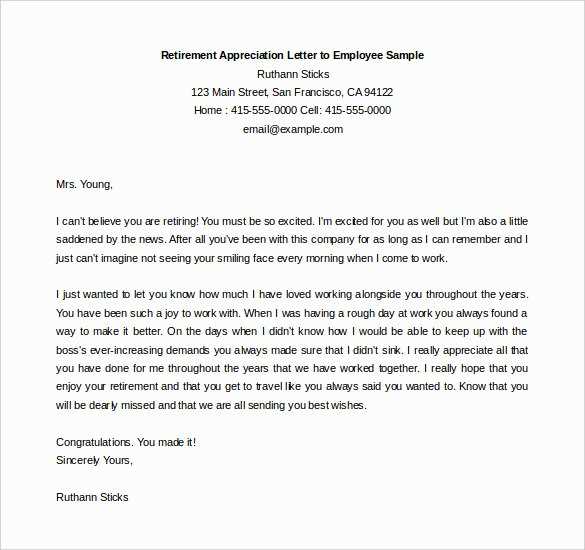
When writing your farewell communication, it’s important to avoid certain mistakes that can make your message seem unprofessional or impolite. By being mindful of these common errors, you can ensure your message is well-received and leaves a positive impression as you transition to the next phase of your life.
Tone and Language
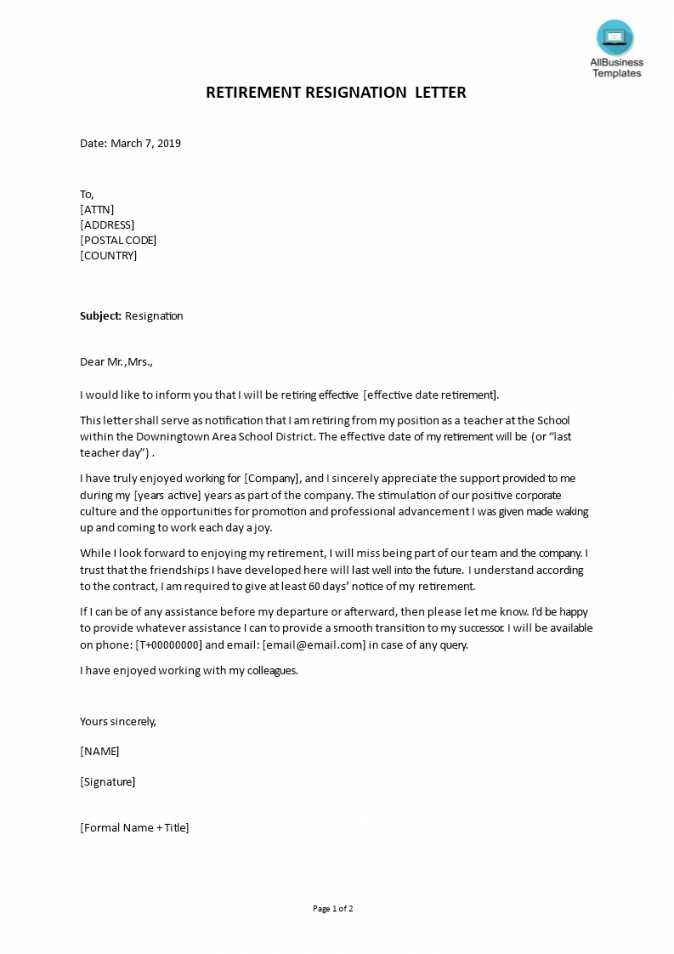
- Using Negative or Critical Language: Avoid complaining or criticizing the organization or individuals in your message. Keep the tone positive, even if you’re leaving due to dissatisfaction.
- Overly Casual Tone: While it’s important to be genuine, using informal language or slang can detract from the professionalism of your message. Ensure your tone matches the context.
- Vague Statements: Be specific in your appreciation and the details you share. General comments can come off as insincere or rushed.
Structure and Clarity
- Neglecting Proper Structure: A disorganized message can confuse the reader. Ensure your communication has a clear introduction, body, and conclusion for better readability.
- Leaving Out Important Information: Failing to include key details like your last day or contact information can create confusion for your colleagues and employer.
- Overloading with Details: While it’s important to express gratitude, avoid making your message too long or filled with unnecessary information. Keep it concise and to the point.
By avoiding these common mistakes, your farewell communication will be effective, respectful, and professional, ensuring a smooth transition for both you and your colleagues.
Where to Find Useful Templates
When crafting your farewell message, finding the right structure can make the process much easier. There are various resources available online that offer customizable formats, allowing you to personalize the content while ensuring it follows a professional format. These resources can help you save time and ensure that your message covers all the essential points.
Online Platforms
Several websites provide free access to a wide range of formats for different types of farewell communications. These platforms allow you to choose from different styles and customize them according to your needs. Below is a table listing some of the best platforms to consider:
| Platform | Description | Link |
|---|---|---|
| Canva | Offers customizable formats with modern designs, easy to personalize for your message. | Visit Canva |
| Microsoft Office | Provides basic formats that are simple to edit in Word or Excel, great for quick use. | Visit Microsoft Office |
| Template.net | Has a wide variety of professional formats for different occasions, including farewells. | Visit Template.net |
Professional Websites
In addition to general platforms, there are also specialized websites that focus on professional business communications. These sites tend to offer more formal and business-oriented formats, which may be especially useful for those leaving a corporate environment.
Personalizing Your Farewell Announcement
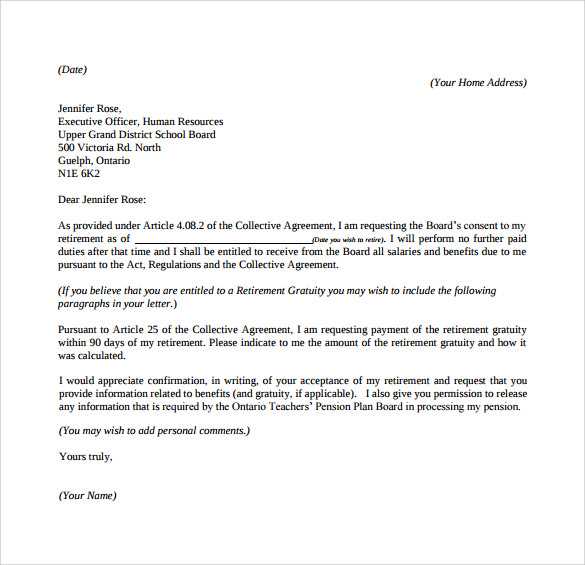
Customizing your farewell message allows you to reflect your unique experience and personality, making it feel more heartfelt and genuine. Personalization helps convey your emotions and show appreciation in a way that resonates with your colleagues and employer. A tailored message ensures that the communication feels authentic and leaves a lasting impression.
Start by addressing your recipients directly. Whether you’re addressing a small team or a broader audience, using names or specific group references adds a personal touch. Next, consider mentioning specific moments or achievements that were meaningful to you during your time with the organization. This gives your message a personal connection to the people involved and emphasizes the positive impact you’ve had.
Additionally, share any future plans or goals if you feel comfortable doing so. This helps show the transition as a natural step forward and provides your colleagues with insight into what you’ll be doing next. Finally, use a friendly and warm tone to express your well-wishes for your team’s continued success, leaving your message on an optimistic note.